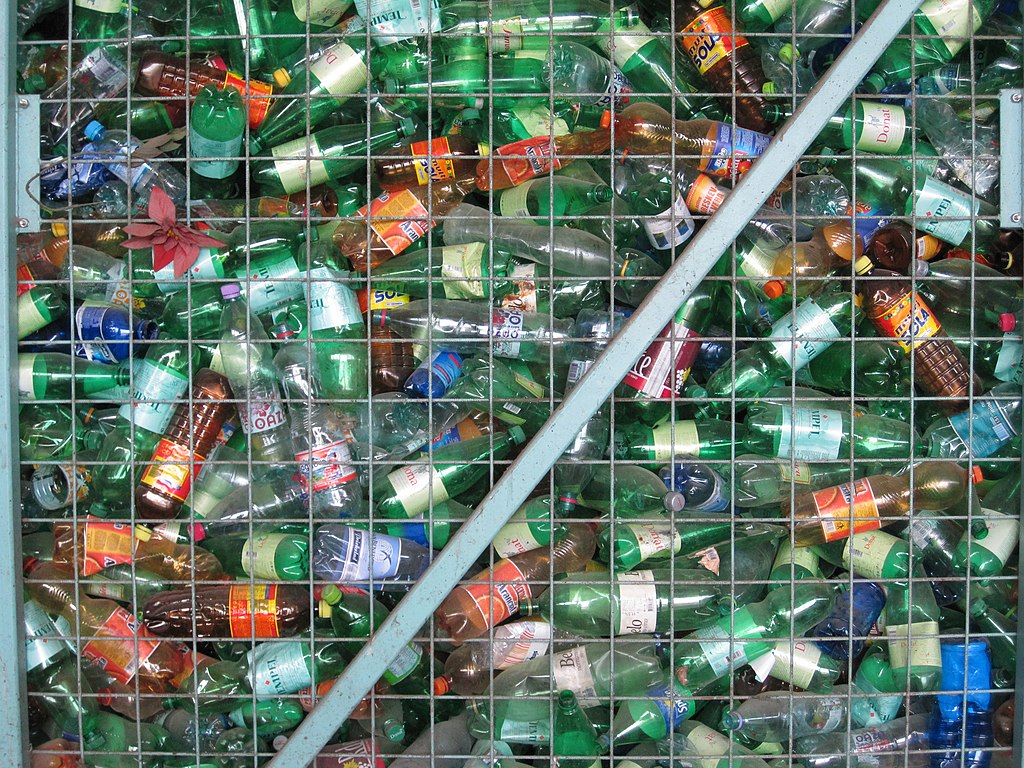
Plastic production has sharply increased over the last 70 years. In 1950, the world produced just two million tons. It now produces over 450 million tons.
Plastic has added much value to our lives: it’s a cheap, versatile, and sterile material used in various applications, including construction, home appliances, medical instruments, and food packaging.
However, when plastic waste is mismanaged – not recycled, incinerated, or kept in sealed landfills – it becomes an environmental pollutant. One to two million tons of plastic enter our oceans yearly, affecting wildlife and ecosystems. We are using a lot of plastic bottles.
Can you find out how many plastic bottles your family use in one week, and collect them? How could this be reduced?
Plastics are used in a wide variety of products and have displaced other materials such as wood, metal, and glass. One of the main applications of plastics is plastic packaging. The production of plastic involves four basic steps: acquiring raw materials, synthesizing a basic polymer, compounding the polymer into a usable fraction, and finally, molding or shaping the plastic.
Products made of plastic are usually marked with a triangle surrounding a number that tells us what type of plastic the product is made of. PET plastic is the most common type used in bottles.
This Worksheet is part of the Quartely Problem Series. For more quartely problems and other classroom materials, click here.
Picture sources: Radulf del Marasme, CC0 via Wikimedia Commons
CC-BY-NC-SA 4.0 licence granted
Content-related competences
